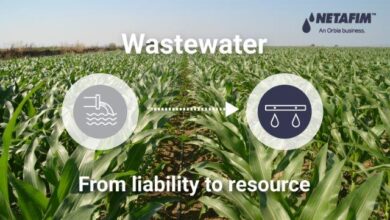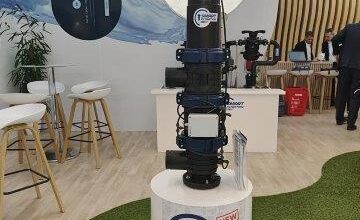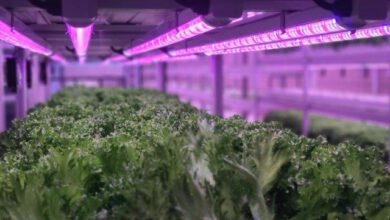Orchard-Scale Water Balance Lysimeter Project
Ehud zeelim, Soil and water researcher, South Arava R&D

Background: Over the last two decades, we have witnessed a steady increase in the planted area of date palm plantations, mainly of the dactylifera L., cv. Medjool species. Today, about 86,300 date palm trees are planted in the southern Arava, representing 14% of the palm trees nationally and about 20% of the palm trees in Israel’s desert areas (the Arava, the Megilot and the Jordan Valley).
Over the past ten years, the number of trees in the southern Arava has grown by hundreds of percent. In the southern Arava region 76,300 date trees are of the Medjool species, which account for about 88% of the region’s date trees.
The average annual consumption of water in the southern Arava is 2500-3000 cubic meters per dunam, and the total consumption of the southern Arava plantations is, accordingly, 14.6-17.5 million cubic meters.
A significant portion (about 6.5 mcm) of the quantity is supplied by recycled wastewater from Eilat, with the rest originating as local brackish groundwater.
The total amount of water consumed in the area is about 15 million cubic meters from the regional aquifers, and about 7 million cubic meters of water are taken from Eilat’s water plants. The average annual potential evapotranspiration in the area (Class A pan) is approximately 3200 mm per year, with negligible precipitation. The 30 year average rainfall is 24 mm with an apparent decreasing trend over the past decade.
Large lysimeters continuously weigh and monitor deep drainage to close water and solute balances for crops, to calculate evapotranspiration and leaching requirements, and to help understand plant response to various parameters of interest, for example irrigation regime or water quality.
Using unique large lysimeters, experiments on date palms were conducted over the last two decades at Southern Arava R&D Center.
These experiments revealed that Medjool trees are more sensitive to salinity than expected, and promoted irrigation scheduling saving up to 30% of the water and fertilizer previously applied, without damage to yields (1).
In the orchard-scale lysimeter project, we currently go one step further by building a unique and innovative experimental system with the ability to monitor water and solute flows and to calculate date palm water use under true plantation conditions. The lysimeter has been built in the summer/fall of 2017 and will be planted with Medjool trees before the end of the year.
Lysimeter characteristics: The area of the lysimeter is 1296 square meters and 4.5m deep and includes 16 trees planted in four rows. The lysimeter itself is in the center of a larger grid of 64 additional identical trees, insuring minimal influence of edge conditions on measurements.
A drainage measurement and sampling system 6 meters deep will collect the leachate (deep drainage through soil) individually from each of 16 trees. Water balance therefore is continuously monitored using data of input, output and changes in soil and tree. The system thus allows comparison of behavior of individual trees within an actual orchard.
Lessons learned from this system will be directly applicable to commercial growers, with no need to compensate for differences between experimental and field conditions. We believe that long-term data from the lysimeter regarding actual temporal water use will allow changes in irrigation protocols with potential water savings that can reach up to 2 million m3, or about 15% of current consumption, annually; fertilizer will be saved proportionally.
We additionally believe that the system will serve as a unique platform for the study and development of a wide variety of topics: from calibration of remote and near sensing techniques, to understanding of spatial variability in soils and microclimate. In the future the system and its concept could be adapted for additional orchard crops or for forestry or ecohydrology research.
I wish to thank:
Tali Tzur and JNF USA for funding the project
Ami Uliel, JNF Regional Director and Chairman of South Arava R&D
Dr. Hanan Ginat, Head, Eilot Regional Municipality
Ezra Ravins, Director, Southern Arava R&D
Professor Uri Shani, Dr. Alon Ben Gal, Dr. Effi Tripler
Amnon Greenberg, Chairman, Israel Date Growers Board
Figure 1: XZ cross section view of single tree basin
Figure 2: XY cross section view of whole lysimeter drainage system
Figure 3: Sealed bottom surface of the lysimeter with the right slopes for each tree basin before filling with soil
Figure 4: Soil surface of the lysimeter before planting the trees
1. Tripler E, Shani U, Mualem Y and Ben-Gal A. (2011) Long-term growth, water consumption and yield of date palm as a function of salinity. Agric. Water Manage. 99, 128-134.




